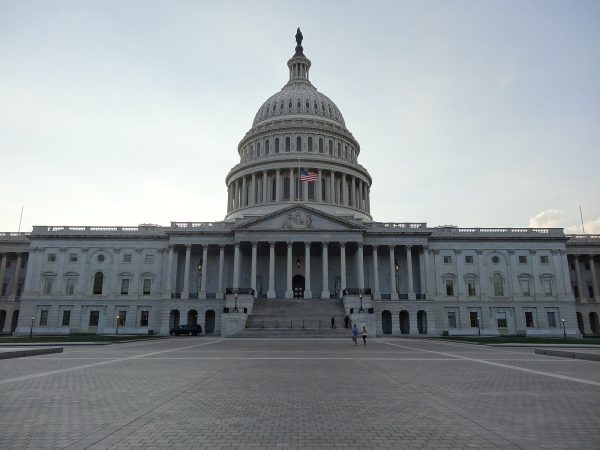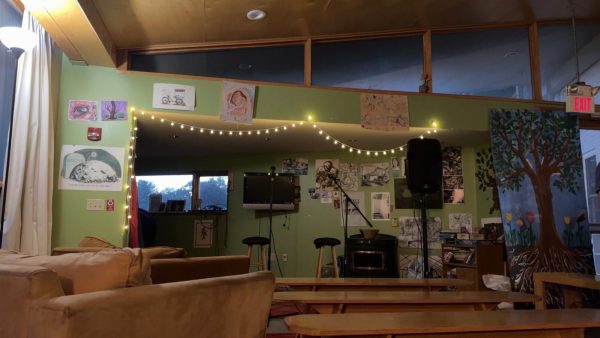From the Archives: Springsteen
October 25, 1974
The evening began with the waiting and audience rowdiness characteristic of any big name rock concert. The hundreds anxious to get inside began to get edgy as the wait seemed almost unbearable. Finally, doors opened and the eager mob ran to get the best possible floor space for the show. The audience seemed to know they were waiting for something special and all frustrations from waiting in line dissolved as music began to fill the dining hall turned concert hall.
The warm-up group, Hange Range, submitted an adequate performance of pure country rock music. If you like a corny, down home style of music, you might have appreciated their versions of some Graham [Sic Gram] Parsons, Eagles, and Ozark Mountain Daredevils tunes, but the audience was keyed to hear Springsteen and this style was in contrast to the mood.
Finally, an introduction of Bruce and his E Street Band and the opening notes of a piano solo provide the first strains of Springsteen of the evening. The pianist goes into the familiar introduction to “Incident on 57th Street” and the audience recognizes the man they have come to hear. He opens his set on a soulful note, performing “57th Street” in a totally different fashion than that of his album. Instead of the band’s instrumentation, only a piano and violin play behind the unique voice. Springsteen almost recites the song as a poem, often seeming overcome by emotion at his very lyrics.
Several times in his two hour set of music (abnormally long by most standards), he performed songs with entirely different instrumentation than what is usually heard. He gives the customer his money’s worth, re-scoring songs so they do not sound merely as if they were being played off of his albums. To hear “57th Street” and “The E Street Shuffle” slowed down to more expressive beats changes the entire meaning of the songs from exciting, heavily scored numbers to those of more lyric-emphasized content.
Springsteen backed by his five-man E Street Band gets into full swing, and after no time at all the audience is rocking along with the band. At first Bruce does his expressive singing relying on facial and bodily gestures without even the use of his guitar. By the third song, “Does This Bus Stop at 82nd Street?”, his leather jacket has come off, revealing “Triumph” emblazoned upon his T-shirt, and his guitar is put to use.
The other primary figure in the band, saxist Clarence Clemons is on stage in a white suit, a shocking contrast to the jean-clad Springsteen. Despite the clothing differences, Springsteen and Clemons complement each other in their musical ability, several times there is almost communication between the two using instruments as well as their smiles.
By now, the energy of Springsteen has spread through the whole hall. No one is able to escape the driving wall of sound. There seems to be no way to avoid being absorbed by the band’s intensity. Everything they play from now on will just further illustrate Springsteen’s total command over his surroundings.
Their version of Benny Kane’s “A Rose in Spanish Harlem” fits in perfectly with the set insofar as its New York City lyrics and heavy saxophone instrumentation. One is almost led to believe that if the song had not been written by Kane. Springsteen would have penned it himself, it is so well suited to his repertoire.
By “Kitty’s Back,” the band is in peak form and every person in the house is feeling it. There is a wild ovation after this superbly played number, the highlight of the evening so far. Springsteen then slows his pace with one of his more expressive songs, “New York City Serenade.” Finally, knowing the show is exactly where it should be and all are just ripe enough, the house springs up to dance to Bruce’s spoken words of “Rosalita, Come Out Tonight,” almost as if he was just saying it to a friend. The opening notes are struck, and now the audience and the whole band are almost dancing with the music. Springsteen and Clemons are up there playing their hearts out for the crowd, and we all know that the superlatives we have read about this man are true, if not vastly understated.
There are all too few performers who can give forth such incessant energy and get the audience to do the same for a concert of this duration. There is no break in excitement during the encore as what once was a dining room is now filled with hundreds of dancing, ecstatic people. Two driving encore songs and the lights finally are flicked on despite cries for still more.
The uncomfortable pre-show waiting now only a faint memory, the sweaty bodies return to their homes still humming the songs of the last two hours. One cannot see a Springsteen concert without getting involved in the music. His performance style is as polished as that of any professional in the business today, and in that crowd after the show, no one could have disagreed. Springsteen can be proud of what he has achieved in the music world. One might say that a Dickinson College concert is not even comparable to a big city-big arena concert, but music of this caliber should fill a hall anywhere. And not just a dining-type hall, but a Carnegie-type one.





dana d shutt • Oct 13, 2022 at 8:39 am
Bruce, the best